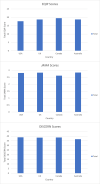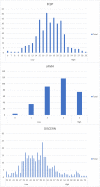COVID-19 prevention and treatment information on the internet: a systematic analysis and quality assessment
- PMID: 32912996
- PMCID: PMC7485261
- DOI: 10.1136/bmjopen-2020-040487
COVID-19 prevention and treatment information on the internet: a systematic analysis and quality assessment
Abstract
Objective: To evaluate the quality of information regarding the prevention and treatment of COVID-19 available to the general public from all countries.
Design: Systematic analysis using the 'Ensuring Quality Information for Patients' (EQIP) Tool (score 0-36), Journal of American Medical Association (JAMA) benchmark (score 0-4) and the DISCERN Tool (score 16-80) to analyse websites containing information targeted at the general public.
Data sources: Twelve popular search terms, including 'Coronavirus', 'COVID-19 19', 'Wuhan virus', 'How to treat coronavirus' and 'COVID-19 19 Prevention' were identified by 'Google AdWords' and 'Google Trends'. Unique links from the first 10 pages for each search term were identified and evaluated on its quality of information.
Eligibility criteria for selecting studies: All websites written in the English language, and provides information on prevention or treatment of COVID-19 intended for the general public were considered eligible. Any websites intended for professionals, or specific isolated populations, such as students from one particular school, were excluded, as well as websites with only video content, marketing content, daily caseload update or news dashboard pages with no health information.
Results: Of the 1275 identified websites, 321 (25%) were eligible for analysis. The overall EQIP, JAMA and DISCERN scores were 17.8, 2.7 and 38.0, respectively. Websites originated from 34 countries, with the majority from the USA (55%). News Services (50%) and Government/Health Departments (27%) were the most common sources of information and their information quality varied significantly. Majority of websites discuss prevention alone despite popular search trends of COVID-19 treatment. Websites discussing both prevention and treatment (n=73, 23%) score significantly higher across all tools (p<0.001).
Conclusion: This comprehensive assessment of online COVID-19 information using EQIP, JAMA and DISCERN Tools indicate that most websites were inadequate. This necessitates improvements in online resources to facilitate public health measures during the pandemic.
Keywords: health informatics; journalism (see medical journalism); world wide web technology.
© Author(s) (or their employer(s)) 2020. Re-use permitted under CC BY-NC. No commercial re-use. See rights and permissions. Published by BMJ.
Conflict of interest statement
Competing interests: None declared.
Figures





References
Publication types
MeSH terms
LinkOut - more resources
Full Text Sources
